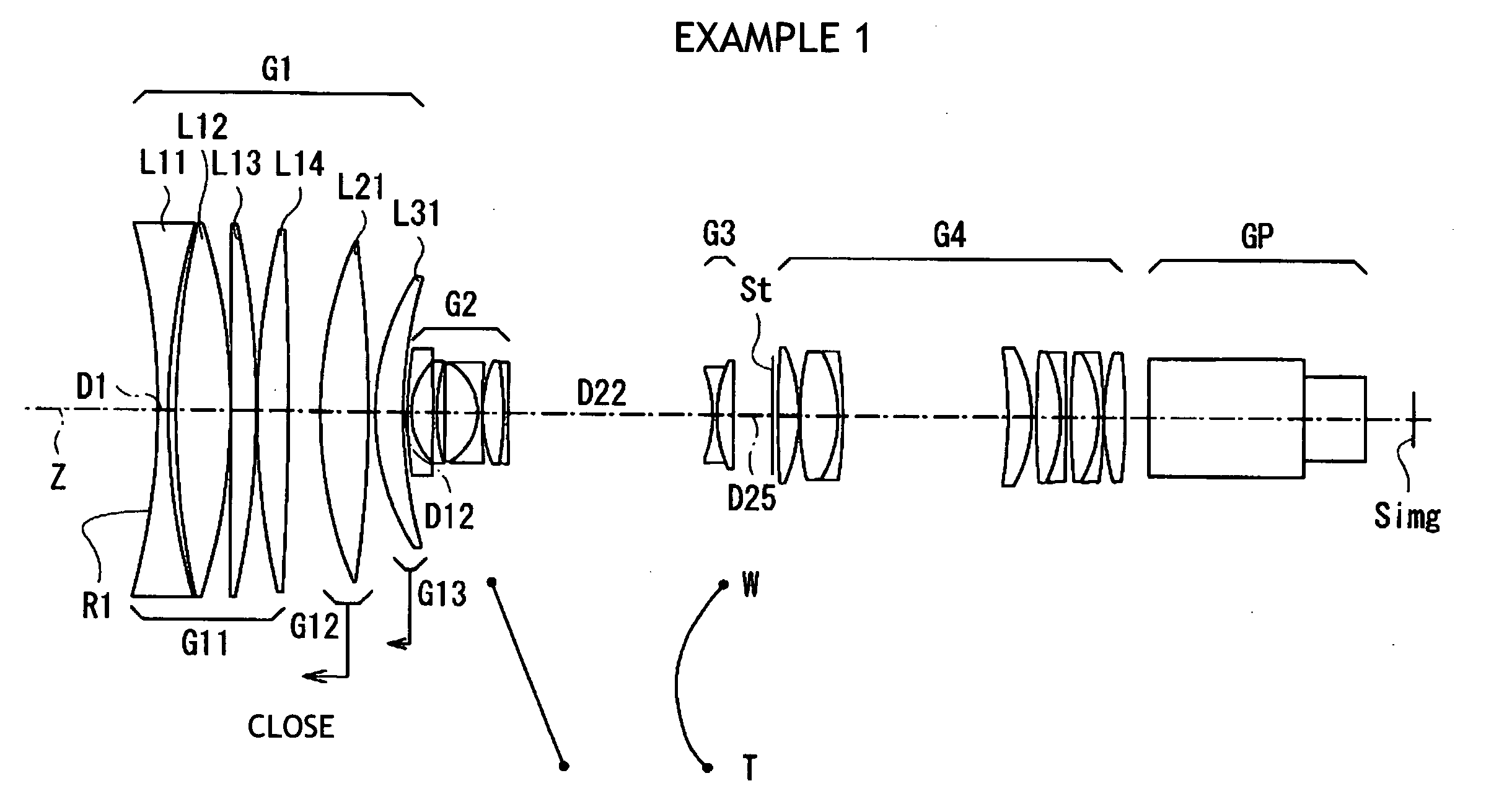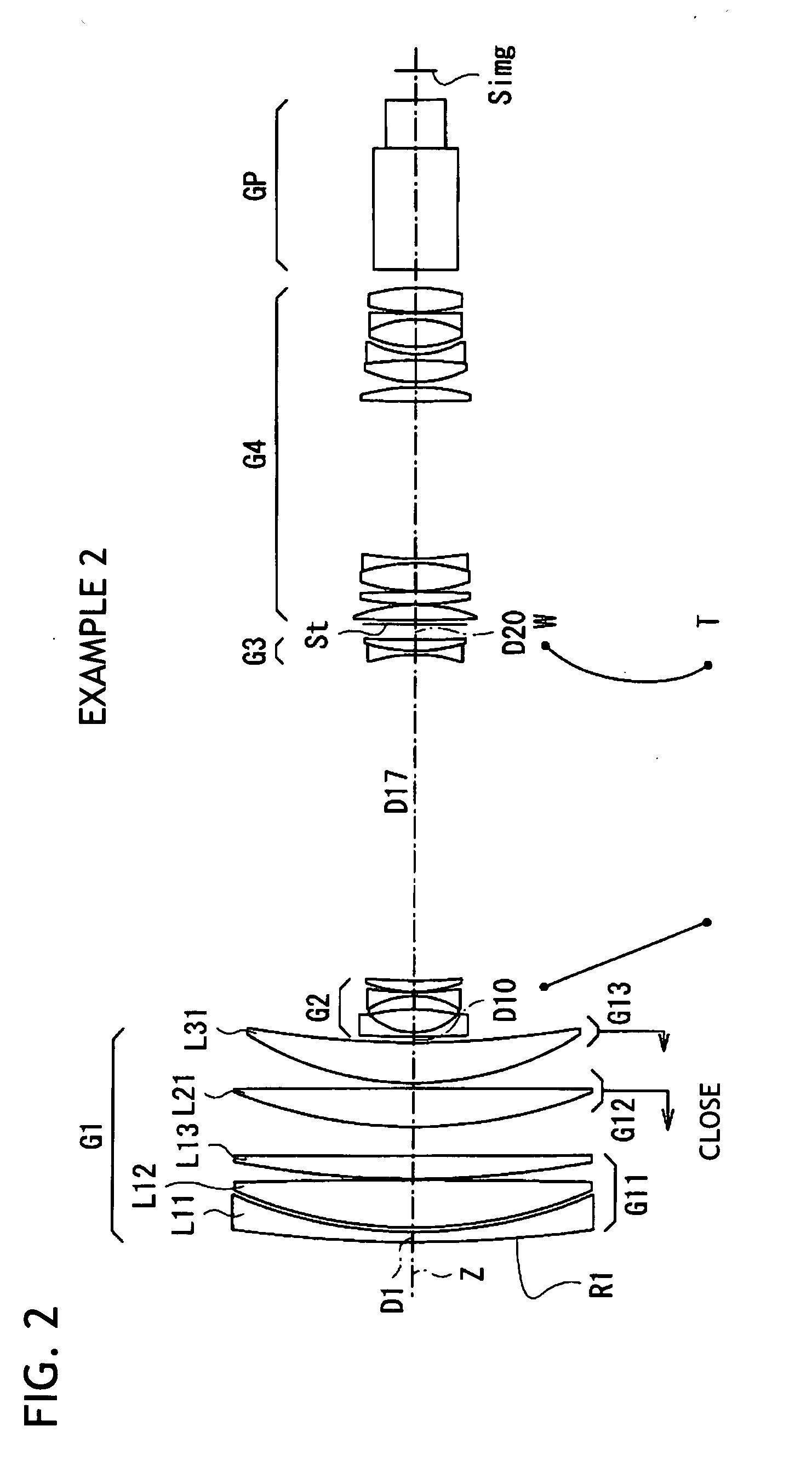Zoom lens and image pickup apparatus
a technology of zoom lens and image pickup, applied in the field of zoom lens, can solve the problems of poor operability during focusing and the tendency to increase mass, and achieve the effects of suppressing the tendency, increasing mass, and reducing the tendency
- Summary
- Abstract
- Description
- Claims
- Application Information
AI Technical Summary
Benefits of technology
Problems solved by technology
Method used
Image
Examples
examples
[0100]Next, specific numerical examples of the zoom lens according to this embodiment will be described below. Hereinafter, first to fifth numerical examples will be described collectively.
[0101]FIG. 9 shows Example 1 specific lens data corresponding to the configuration of the zoom lens shown in FIG. 1. The column for surface number Si in the lens data shown in FIG. 9 indicates the number of an i-th (i=1 to 44) surface wherein with respect to the zoom lens according to Example 1, the surface of the component element on the most subject side is referred to as a first surface, the number is sequentially incremented toward the image side. The column for a radius of curvature Ri indicates a value (mm) of the radius of curvature of the i-th surface from the object side by setting the reference character R1 attached in FIG. 1 as a radius of curvature of the first surface. Similarly, the column for a surface distance Di indicates an interval (mm) between an i-th surface Si from the object...
PUM
 Login to View More
Login to View More Abstract
Description
Claims
Application Information
 Login to View More
Login to View More - R&D
- Intellectual Property
- Life Sciences
- Materials
- Tech Scout
- Unparalleled Data Quality
- Higher Quality Content
- 60% Fewer Hallucinations
Browse by: Latest US Patents, China's latest patents, Technical Efficacy Thesaurus, Application Domain, Technology Topic, Popular Technical Reports.
© 2025 PatSnap. All rights reserved.Legal|Privacy policy|Modern Slavery Act Transparency Statement|Sitemap|About US| Contact US: help@patsnap.com



